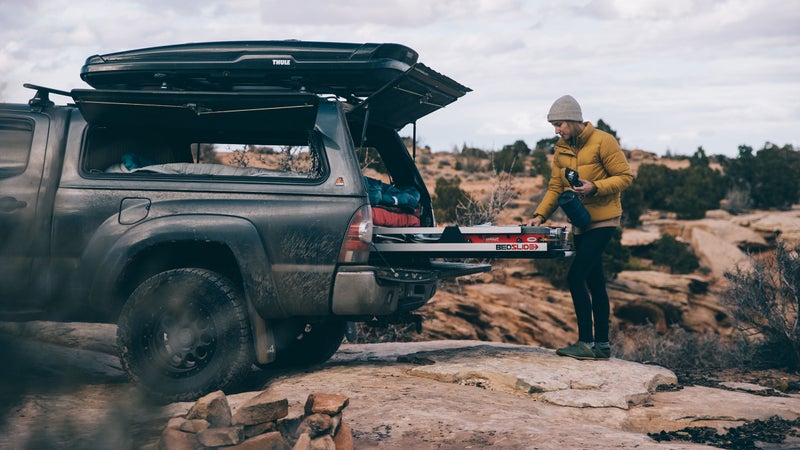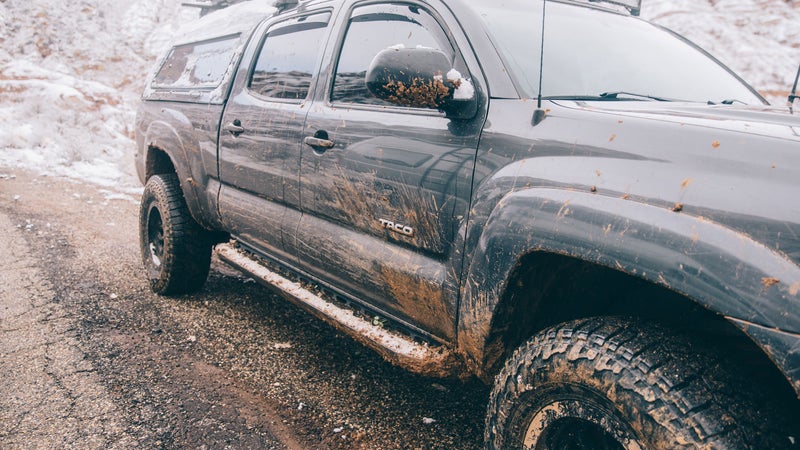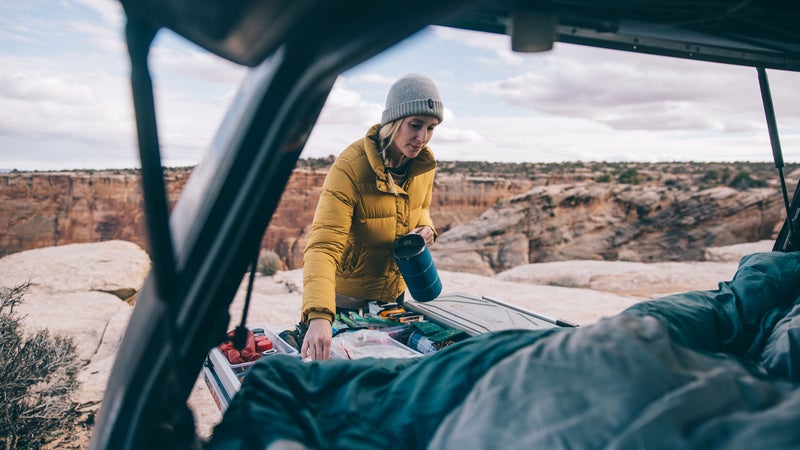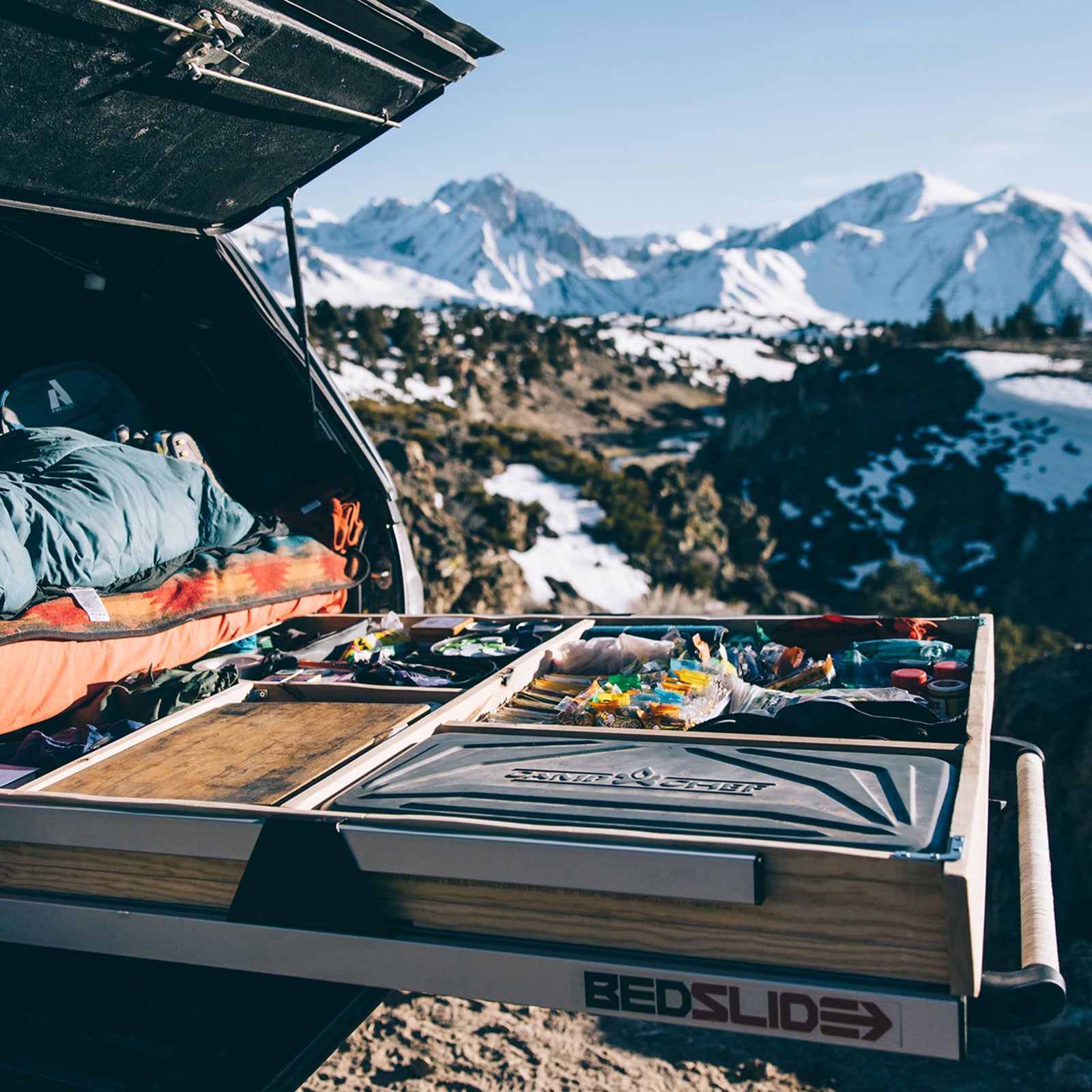Who hasn't read plenty of Instagram captions about the perks of life on the road? As someone who actually lives this way, I feel we’ve reached peak saturation of Muir quotes and sepia-toned vistas. These things aren’t inherently bad, but they are a bit misleading. For instance, when I moved into my Toyota Tacoma four years ago, I wish I’d known that living (or spending an extended period of time) and storing all your gear in a truck takes pro-level planning and organization.
Despite that learning curve of jigsawing ski poles, tents, and running shoes in the same space where I sleep, this lifestyle has allowed me to meet a lot of friends, ski peaks all over the West, run rarely visited trails, and sleep often under the stars. So, in the spirit of #keepingitreal, here are my hard-earned insights for making it all fit, whether you’re heading out for the weekend or moving in for the long haul.
#1. Don’t Overpack

Contrary to popular opinion, you don’t need to load your truck or van with everything you own—bikes, skis, kayaks, climbing rack, or fill in the blank. You’re not going to climb El Cap and paddle the Salmon in the same weekend. All paranoid packing will do is fill up your rooftop box and trunk, thereby slowing you down. If I could give only one piece of advice, it would be: bring less crap.
#2. Stick to Your Systems
There’s a method to my madness for almost everything. I know where every spoon, flashlight, sleeping bag, and snack is squirreled away in my truck, making them easy to find when needed. Whether you plan to live in your vehicle or just use it for long weekends and the occasional road trip, it’s important to dial in simple systems.
To start, organize items by what you need most frequently, keeping the most-used items in the most accessible places. Then, divide by category. I rely on a for all my camping gear. Sixteen cubic feet is enough for two pairs of skis, a couple tents and sleeping bags, climbing and skiing accessories, and a few other odds and ends. I use a to store my full kitchen (double-burner stove, pots and pans, food), plus smaller camping gear (stoves, water filter, first aid), lots of miscellanea (tape, rope and cords, batteries), and a handful of books. All my clothes go in the back seat of the truck, which I’ve modified with a few shelves for convenience. If you’re just looking to use your vehicle as a home once in a while, large plastic bins would be a good substitute. Together, these three storage areas afford plenty of space.
#3. Prioritize Function Over Form

The transition from house to vehicle can be brutal. Ditch anything you don’t think will have a concrete use while on the road. From the clothes I bring along to the aftermarket parts I’ve added to the truck, everything has one thing in common—it’s highly functional, even at the cost of style points. This run the gamut from my investment in four-wheel drive to access more remote places to a (which, despite making my truck look like a construction vehicle, locks securely and keeps my stuff safe). Instead of an oak interior, I opted to buy burly , and instead of a new suit for every occasion, I wear the somewhat city-appropriate , , and a .
#4. Fix It Yourself
Over time I’ve learned that a key component of bringing less is learning to fix what I have and knowing when to move on. You don’t need to be a full-blown engineer to repair most things—learning to patch your clothes, build a new storage drawer, or mend a broken ski pole is easier than you’d guess. I’ve been surprised by what I can fix with just a Leatherman, drill, duct tape, zip ties, and a sewing kit. If you truly break a piece of gear, it’s OK to replace it. But don’t buy a new one while keeping the old one, thinking it’ll somehow come in handy later.
#5. Crowdsource Your Storage

I leave a lot of stuff at friends’ houses and allow them to use it whenever they like. The ownership of this gear floats in some happy purgatory, which is fine by me. This applies mostly to larger items, like big expedition tents and whitewater playboats, as well as seasonal gear like skis and bikes. This agreement is a win-win, but only if you’re willing to accept that your friends might break or lose something once in a while. For me, the benefits outweigh the costs—I’m able to travel light and keep things organized, and I rarely stress about things getting stolen. Plus, gear is made to be used, not left in a garage or basement.
#6. When You Do Buy, Opt for Multipurpose Gear
It’s unrealistic to avoid new purchases altogether. But when you do decide to snag that new toy, prioritize products that serve multiple uses. For example, find skis that are sufficient on- and off-piste, a gravel bike that can do a bit of everything, or a helmet that’s suitable for multiple sports. These all come with small trade-offs, but versatile gear has enabled me to do more with less.


